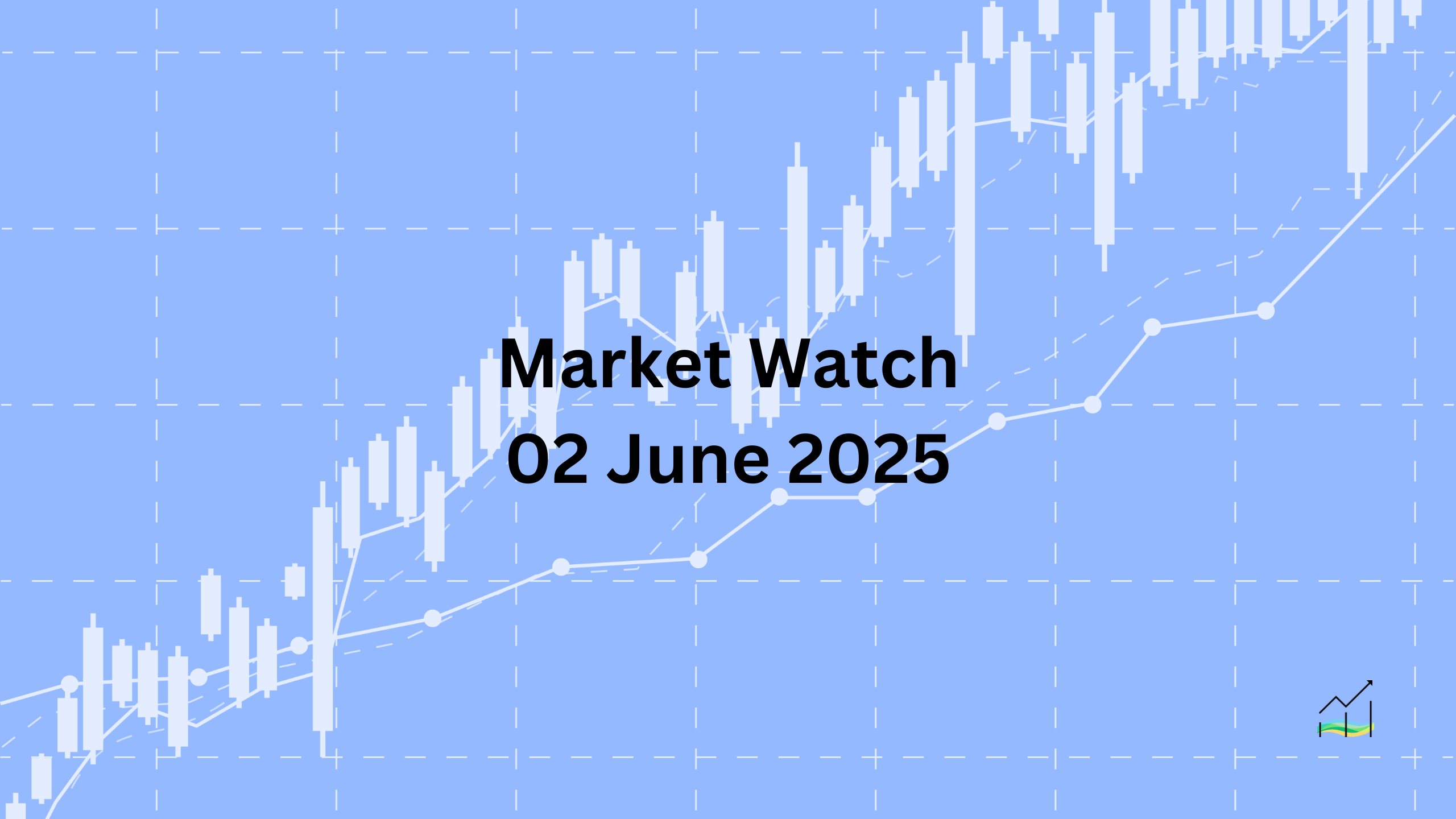02/06/2025 Market Watch

Risk Aversion Returns on Trade Collapse & Geopolitical Strain
Key Takeaways:
- Markets shaken by US-China trade tensions and Ukraine drone strike.
- US dollar, stocks, and bonds down; other currencies gaining.
- Canadian dollar hits new yearly highs; emerging market currencies also up.
- Fed Chair Powell’s speech and US economic data in focus.
- OPEC+ maintains cautious stance on output; tensions rise with Iran.
Global financial markets opened the week significantly rattled due to escalating geopolitical tensions and renewed trade conflicts. The breakdown of the US-China trade agreement and the subsequent doubling of tariffs on steel and aluminum imports have put significant downward pressure on stocks, bonds, and the US dollar. Conversely, all G10 currencies have strengthened, gaining at least 0.35%, with the Canadian dollar notably reaching new highs for the year despite lagging behind peers. Emerging market currencies have broadly followed suit, showing gains across the board.
Market participants are closely monitoring upcoming US economic data, including the final May manufacturing PMI, ISM manufacturing index, and April construction spending figures. However, investors are likely to place significant emphasis on Federal Reserve Chair Jerome Powell's scheduled speech at 1 pm EST, as they seek further clues on the direction of US monetary policy.
In Asia, China's mainland markets remain closed for a national holiday along with several smaller regional exchanges. Meanwhile, Europe's Stoxx 600 index declined nearly 0.3%, a modest pullback after gaining 4% last month. US index futures indicate a lower open, down between 0.5% and 0.7%, following robust performances last month—highlighted by the S&P 500’s gain of just over 6% and the Nasdaq’s nearly 9.6% surge.
Bond yields have ticked higher globally, with Japan's 10-year yield climbing close to 1.50%, though longer-dated maturities softened slightly. European 10-year yields rose moderately by 4-6 basis points, while the US 10-year Treasury yield increased by four basis points to nearly 4.45%. Gold prices rebounded by approximately 1.8%, hovering near the critical $3350 level after last week's 2% decline.
In commodity markets, oil prices stabilized near recent highs after OPEC+ refrained from significantly boosting July output as some market participants had anticipated. Compounding concerns, geopolitical tensions intensified amid reports of Iran accelerating its uranium enrichment to near-weapons-grade levels, which could further fuel volatility across energy markets.
United States of America
Overview
The US dollar remains under pressure as the Dollar Index tests last month’s low near 98.70. Tensions with China have resurfaced after both sides accused each other of breaching the recent agreement made in Switzerland. In response, the US has doubled its tariffs on steel and aluminum imports to 50%, fuelling renewed trade-related uncertainty.
Despite today’s release of the final May manufacturing PMI and ISM manufacturing data, markets are paying little attention to survey results. The Federal Reserve has made it clear that policy decisions will not be influenced by soft data alone. The labour market remains the key focus, as policymakers believe a resilient job market gives them room to maintain a restrictive stance until inflation moves sustainably back to target.
Federal Reserve Chair Jerome Powell is expected to reinforce this position during his scheduled speech later today. Markets have already adjusted expectations, pushing the next potential rate cut out to the fourth quarter. While the JOLTS report due tomorrow is forecast to show a further decline in job openings, it has lost its influence on market pricing in recent months. The main event is Friday’s nonfarm payrolls release, with consensus pointing to a 125k increase following April’s 177k. However, investors are more likely to react to any unexpected changes in the unemployment rate.
Economic Drivers
- Rising US-China trade tensions as both sides accuse each other of breaching the latest deal.
- Tariffs on US steel and aluminum imports raised to 50%, fuelling broader risk aversion.
- The Federal Reserve prioritises labour market strength and remains cautious on cutting rates.
- Powell expected to reinforce the Fed’s commitment to restrictive policy until inflation moderates.
- JOLTS report seen as having diminished market impact; focus remains on nonfarm payrolls and unemployment rate.
Data and Events
- 02 June 2025: FOMC Member Waller Speaks.
- 02 June 2025: ISM Manufacturing PMI & Prices
Price Action
- Dollar Index is testing last month’s low near 98.70.
- US dollar broadly weaker against major peers amid heightened trade tensions.
- Treasury yields remain elevated; 10-year yield near 4.45%.
- Markets have delayed expectations for Fed rate cuts until Q4.
Key Points:
- Dollar Index is retesting key support at last month’s low.
- Trade conflict with China intensifies following mutual accusations and tariff hikes.
- Powell speech expected to reiterate inflation and labour market focus.
- Nonfarm payrolls on Friday is the critical data release of the week.
- Market attention shifting toward unemployment rate sensitivity.
Australia
Overview
The Australian dollar has shown relative strength, recording a new high for the year near $0.6535 early last week. However, it then moved into a more contained range between $0.6400 and $0.6460. The currency averaged around $0.6440 in May and briefly approached $0.6490 today. Despite multiple intraday moves above $0.6500 last month, it has not managed a daily close above that level.
Australia’s manufacturing sector continues to outperform many other high-income economies. The May manufacturing PMI came in at 51.7, one of the strongest readings among developed nations, though it was later revised down to 51.0 in the final release. Importantly, this marks a sustained expansion for the sector, which had previously struggled to maintain readings above 50 in 2023 and early 2024.
Looking ahead, attention turns to several key domestic releases. The Reserve Bank of Australia’s meeting minutes are due tomorrow, followed by the first estimate of Q1 GDP on Wednesday. Consensus expects quarterly growth of around 0.4%. On Thursday, April data on trade and household spending will provide further insight into the health of the broader economy.
Economic Drivers
- Manufacturing sector shows resilience with a consistently expansionary PMI in 2025.
- RBA minutes and Q1 GDP expected to offer clarity on the monetary and growth outlook.
- Household spending and trade data will help shape expectations for the domestic demand recovery.
Data and Events
No major economic releases are scheduled today.
Price Action
- AUD hit a yearly high near $0.6535 last week.
- Traded in a tight range between $0.6400 and $0.6460 during the latter half of the week.
- Brief move to $0.6490 today, with no sustained closes above $0.6500 despite multiple intraday attempts in May.
- Monthly average for May stood at approximately $0.6440.
Key Points:
- AUD remains capped below $0.6500 despite strong intraday attempts.
- Manufacturing PMI indicates relative strength within high-income countries.
- Q1 GDP and RBA minutes will guide short-term sentiment.
- Market watching April trade and spending data for further domestic signals.
Canada
Overview
Canada’s stronger-than-expected first quarter GDP has led markets to reassess expectations for rate cuts at this week’s Bank of Canada meeting. Q1 GDP expanded by 2.2% on an annualised basis, well above the median forecast of 1.2%. However, this surprise was tempered by a downward revision to Q4 2024 growth, now reported at 2.1% compared to the initial estimate of 2.6%.
Despite this mixed picture, the market response has been clear. The Canadian dollar strengthened, pushing the US dollar to a three-day low near CAD1.3730 before the weekend and further to a new low for the year near CAD1.3675 today. The move reflects the market’s lowered expectations for a near-term cut. Current pricing suggests less than a 25% chance of a rate cut this week, while economists surveyed by Bloomberg still expect one.
The Bank of Canada’s decision is not likely to be swayed by today’s May manufacturing PMI, which holds little policy relevance. Instead, attention remains on underlying inflation data, which has consistently come in stronger than anticipated and triggered the recent shift in rate expectations. Market-implied pricing now reflects 36 basis points of cuts by year-end, down from over 50 basis points at the beginning of May.
Economic Drivers
- Q1 GDP beat expectations at 2.2%, compared to a 1.2% forecast.
- Q4 2024 GDP revised lower to 2.1% from 2.6%, partially offsetting Q1 strength.
- Elevated underlying inflation prompted a reevaluation of rate cut probabilities.
- Swaps market shows reduced odds for a June cut, now under 25%.
- Market pricing for total 2025 cuts has declined from over 50 bp to 36 bp.
Data and Events
No major economic releases are scheduled today.
Price Action
- USD/CAD fell to a three-day low near 1.3730 before the weekend.
- Extended decline today to a new yearly low near 1.3675.
- Market eyes next potential support near 1.3600.
- Canadian dollar strengthened on revised policy expectations.
Key Points:
- Q1 GDP surprised to the upside, diminishing near-term rate cut odds.
- USD/CAD at lowest level of 2025 as market reprices BoC outlook.
- PMI data not expected to influence the rate decision materially.
- Underlying CPI and GDP data remain central to policy direction.
China
Overview
The US dollar appears to have established a near-term low against the offshore yuan last week around CNH7.1615, gradually regaining ground since then. Ahead of the weekend, the dollar tested the 20-day moving average near CNH7.2055 for the second session in a row but failed to close above it — a level it has not surpassed in over a month. Today’s move brought it close to the 200-day average at CNH7.2260, though price action remains contained with domestic Chinese markets closed for the Dragon Boat Festival.
Over the weekend, China released its official May PMI data. Manufacturing activity showed signs of stabilisation, with the headline index improving from 49.0 to 49.5, though still in contraction territory. Non-manufacturing activity remained modestly expansionary at 50.5, slightly higher than the prior reading. The composite PMI inched up to 50.3, reflecting mild improvement in overall business conditions. Although a 90-day tariff relief agreement with the US has temporarily lifted sentiment and led to a pickup in orders, especially from American retailers, container shipments are already slowing again. The Caixin manufacturing PMI is due tomorrow, with services and composite readings expected later in the week.
Economic Drivers
- China’s official PMIs suggest a stabilising but still fragile economic recovery.
- A temporary 90-day tariff relief deal with the US may have front-loaded export orders.
- Container shipment momentum appears to be fading after an initial surge in demand.
- Domestic markets are closed today for the Dragon Boat Festival.
Data and Events
No major economic releases are scheduled today.
Price Action
- Dollar found support near CNH7.1615 early last week.
- Failed to close above 20-day moving average (~CNH7.2055) despite repeated tests.
- Reached CNH7.2240 today, nearing 200-day moving average (~CNH7.2260).
- Price action subdued due to public holiday closures in China.
Key Points:
- Dollar is gradually strengthening against the yuan after a near-term bottom.
- Official PMIs point to stabilising conditions, led by slight manufacturing improvement.
- US tariff relief boosted orders temporarily; shipping volume is slowing again.
- Key Caixin PMIs later this week will offer further insight into economic momentum.
Europe
Overview
The euro experienced a notable shift in sentiment late last week, marked by a bullish outside up day and what may prove to be a key technical reversal. However, ahead of the weekend, it remained below the $1.1400 mark despite having set May’s high near $1.1420 earlier in the week. That changed today, as the euro advanced to nearly $1.1440, briefly reclaiming upside momentum.
On the data front, the final May manufacturing PMI came in at 49.4, consistent with the preliminary estimate. While this marks the fifth straight monthly improvement (up from 49.0 in April and 47.3 a year earlier), the sector remains in contraction, with the index below the 50 expansion threshold for nearly two years. Still, this incremental progress does not shift attention away from the European Central Bank’s meeting this Thursday, where markets are firmly pricing in a 25-basis-point rate cut. Expectations beyond that suggest a potential pause, with the next move likely postponed until the fourth quarter.
Meanwhile, geopolitical tensions remain in the background. Reports have emerged that a Ukrainian drone operation destroyed around 40 Russian bombers and other aircraft positioned in the open. These were placed there under terms of the now-defunct START treaty. The sophistication of the strike suggests high-level planning, possibly known in advance by Ukrainian President Zelensky during his controversial visit to Washington earlier this year.
Economic Drivers
- Euro has regained strength after posting a key technical reversal last week.
- Final May manufacturing PMI confirmed at 49.4, marking five months of steady improvement.
- The index remains in contraction and has not surpassed 50 since June 2022.
- Market consensus anticipates a 25 bp ECB rate cut this week, followed by a likely pause.
- Ongoing geopolitical risk in Eastern Europe after Ukraine's targeted drone strike on Russian aviation assets.
Data and Events
- 02 June 2025: Eurozone Manufacturing PMI.
Price Action
- Euro failed to break $1.1400 before the weekend despite bullish setup.
- Advanced today to nearly $1.1440, surpassing last month’s high near $1.1420.
- Momentum reflects improving sentiment ahead of the ECB meeting.
Key Points:
- Euro rebounded above $1.1400 after initial consolidation.
- Manufacturing sector continues gradual recovery but stays in contraction.
- ECB is expected to deliver a 25 bp rate cut this week.
- Markets anticipate a policy pause after June’s decision.
- Geopolitical developments could reintroduce volatility in the region.
Japan
Overview
The Japanese yen continued its recovery following the Tokyo CPI release, extending Thursday’s rebound. Despite this, the US dollar spent most of Friday consolidating within a narrow JPY143.45 to JPY144.45 range. Today, however, the dollar retreated further against the yen, even as US yields moved higher — a signal that rate differentials may not be the only factor at play. During European hours, the dollar set new session lows just above JPY142.75.
Attention also turned to Japan’s Q1 capital spending data, which reinforced the earlier estimate of strong private sector investment. The first-quarter GDP estimate had already priced in a 5.8% annualised increase in private investment, confirming strong corporate activity. On the manufacturing front, the final May PMI came in at 49.4, slightly above the preliminary reading of 49.0. This marks the first back-to-back monthly improvement in a year. However, the index remains below the 50 threshold, signalling continued contraction in the sector.
Technically, the trendline connecting the April and May lows is now near JPY142.35 and is expected to rise toward JPY142.70 by week’s end, offering potential support if the yen continues to strengthen.
Economic Drivers
- Tokyo CPI release supported renewed yen strength into the weekend.
- Q1 capital expenditure confirmed strong private investment, aligned with GDP data.
- Final May manufacturing PMI at 49.4 marked slight improvement but remains in contraction.
- Market dynamics suggest yen gains are not solely tied to US-Japan rate differentials.
Data and Events
No major economic releases are scheduled today.
Price Action
- Dollar consolidated between JPY143.45 and JPY144.45 before weekend.
- Retreats further today to near JPY142.75 despite rising US yields.
- Key trendline support near JPY142.35 today; moves toward JPY142.70 by week’s end.
- Yen gains driven by both domestic data and technical support levels.
Key Points:
- Yen extended its recovery following Tokyo CPI and weak USD sentiment.
- Q1 capital spending confirmed strong corporate investment activity.
- Manufacturing PMI showed modest improvement but remained below 50.
- USD/JPY retreat highlights weakening bullish momentum.
- Trendline near JPY142.35 offers key short-term technical support.
United Kingdom
Overview
Sterling reached a fresh three-year high near $1.3595 early last week before entering a consolidation phase. Today, the pound is firm above $1.3550, with the next potential resistance area around $1.3640. Despite the recent strength, market-moving domestic data has been limited. Consumer credit and mortgage approvals released this week are of only marginal importance, and the final May manufacturing PMI also held little sway over price action.
The final May PMI was revised higher to 46.4 from a preliminary estimate of 45.1. While this marks a modest improvement, the figure remains in contraction territory. It continues a broader downtrend from 51.2 a year ago and 47.0 at the end of 2024. Still, attention remains focused on monetary policy. The Bank of England is not expected to cut rates at its June 19 meeting, with the swaps market pricing in just one full cut for the year and only a modest chance of a second.
Markets will be watching for comments from BOE Governor Andrew Bailey and three other Monetary Policy Committee members who are scheduled to testify before Parliament tomorrow. Their remarks could offer additional guidance on the rate path and inflation outlook.
Economic Drivers
- Consumer credit and mortgage data offer little directional input.
- Manufacturing PMI revised to 46.4, reflecting slow but insufficient improvement.
- BOE rate cut unlikely in June; one cut fully priced for the year.
- BOE officials’ testimonies may provide further policy signals.
Data and Events
- 02 June 2025: Final Manufacturing PMI.
Price Action
- GBP/USD held above $1.3550 today following earlier consolidation.
- Three-year high posted last week near $1.3595.
- Market eyes next resistance near $1.3640.
- Limited domestic data impact; price driven by broader expectations.
Key Points:
- Sterling trades near multi-year highs with solid support.
- Manufacturing remains in contraction despite upward PMI revision.
- BOE seen holding rates steady in June; one cut priced in for 2025.
- Market attention focused on BOE testimonies for forward guidance.
© 2025 SKONE Enterprise (003319453-V). All rights reserved.
The content on this site is for informational purposes only and does not constitute financial advice.


